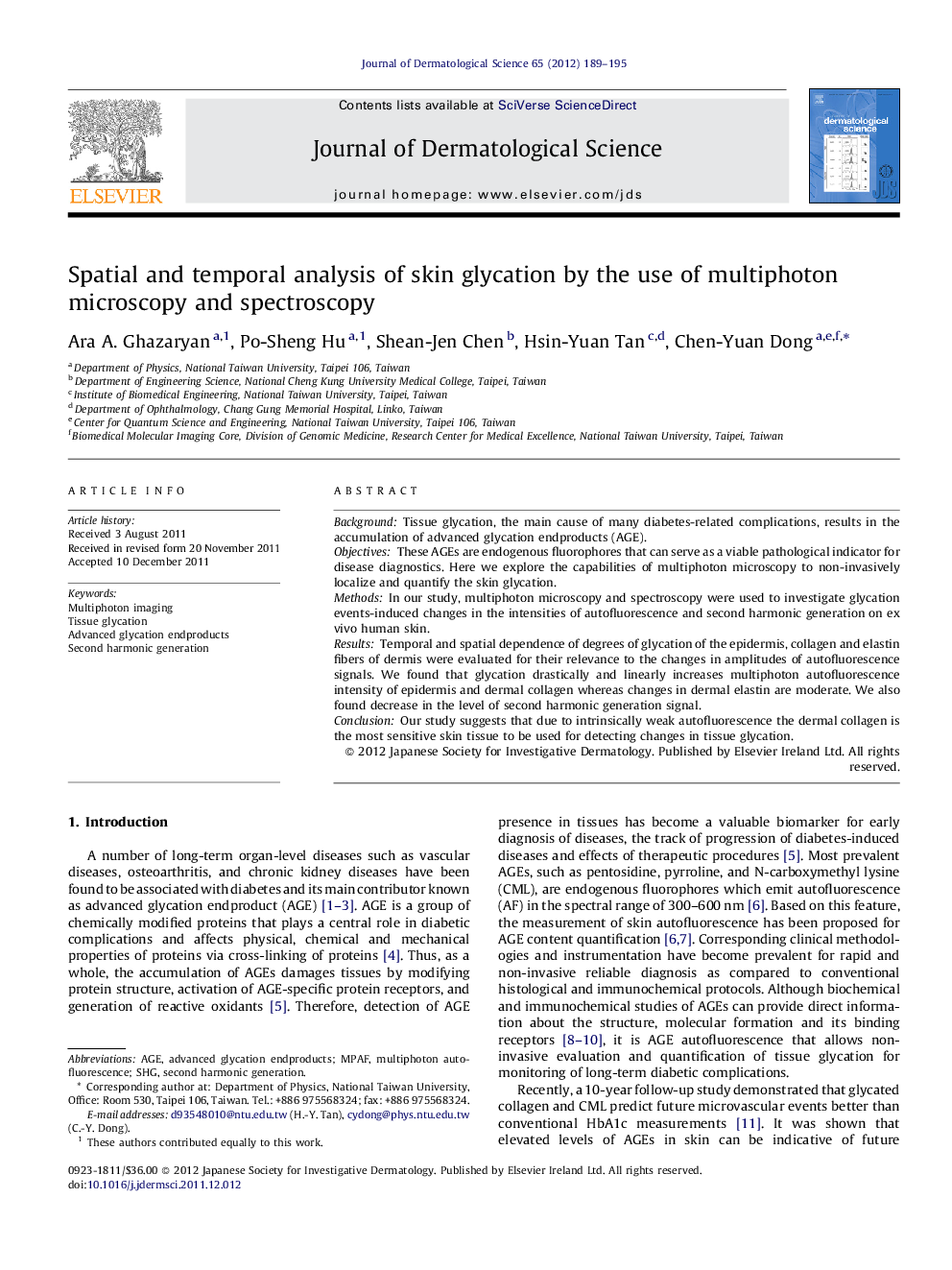| Article ID | Journal | Published Year | Pages | File Type |
|---|---|---|---|---|
| 3213511 | Journal of Dermatological Science | 2012 | 7 Pages |
BackgroundTissue glycation, the main cause of many diabetes-related complications, results in the accumulation of advanced glycation endproducts (AGE).ObjectivesThese AGEs are endogenous fluorophores that can serve as a viable pathological indicator for disease diagnostics. Here we explore the capabilities of multiphoton microscopy to non-invasively localize and quantify the skin glycation.MethodsIn our study, multiphoton microscopy and spectroscopy were used to investigate glycation events-induced changes in the intensities of autofluorescence and second harmonic generation on ex vivo human skin.ResultsTemporal and spatial dependence of degrees of glycation of the epidermis, collagen and elastin fibers of dermis were evaluated for their relevance to the changes in amplitudes of autofluorescence signals. We found that glycation drastically and linearly increases multiphoton autofluorescence intensity of epidermis and dermal collagen whereas changes in dermal elastin are moderate. We also found decrease in the level of second harmonic generation signal.ConclusionOur study suggests that due to intrinsically weak autofluorescence the dermal collagen is the most sensitive skin tissue to be used for detecting changes in tissue glycation.
